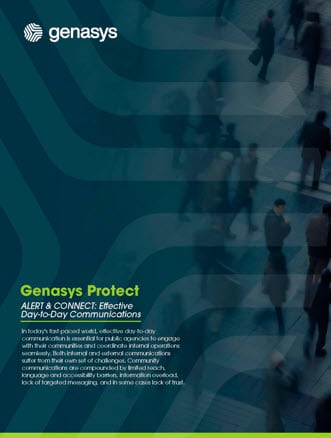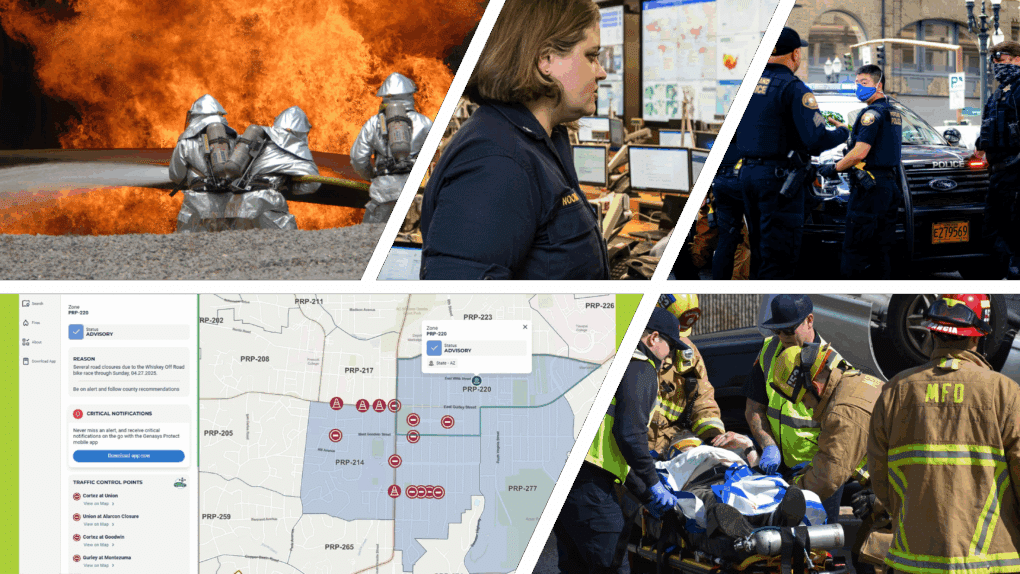You see it every summer: photos and videos of devastating storms producing hurricane-force winds, heavy rains, and severe flooding. You hear the stories of swift-water rescues and mass evacuations, not to mention expensive damage and the logistical nightmare of massive road closures.
When you see the devastation, it’s natural to start thinking about how you would respond if it happened in your community next time—because it might. Many members using our Genasys Protect CONNECT platform have been in this exact situation, and we hear stories all the time about how they got through a disaster.
No community is immune to summer weather disasters. They happen everywhere and often in the blink of an eye, which means preparation for a disaster needs to happen far in advance.
Don’t Let Natural Disasters Cause Internal Disasters
Feeling like disasters are becoming more commonplace? You’re not wrong.
In the past 40 to 50 years, unusually hot summer days and intense storms have increased in prevalence and severity. The US now gets much more of its precipitation from single-day events, and rivers across the US flood more frequently.
Heat and wildfires are also becoming more of a threat. Record-breaking wildfires and droughts have hit states across the western and southern US. Experts predict that, as the global temperature rises, we’re likely to see all kinds of extreme weather events happen more frequently, generating more devastating effects.
“We had a tornado touch down in our small Texas city and destroyed many buildings and homes. The ability to request resources instantly and stage our response & clean up efforts [on CONNECT] proved to be very valuable.”
Police Chief in East Texas
Is Your Department Prepared to Respond?
No matter where you’re located, it’s becoming more and more likely that you’ll have to respond to emergency conditions. How fast can your agency mobilize? What conditions are you ready to face? Can you reach your team effectively?
Think about your EOC and how your emergency response plans incorporate emergency communications. What will you do in the event that you and your team can’t work in close quarters? What if you can’t safely respond to the EOC at all?
“We get a lot of flooding from spring storms and we need platforms like CONNECT and EVAC that will immediately update our entire county.”
Emergency Manager in Iowa
Make Your Emergency Operation Center (EOC) a Virtual EOC (VEOC)
There’s no way around it; emergency preparation is more different now than it’s ever been before. CONNECT is here to help.
Through CONNECT, you can build a virtual EOC that connects you remotely with your entire incident management team. The whole team is deployable through members’ CONNECT accounts. Even if you can’t meet someone in person, you can still provide critical aid.
“In Arizona, we get heavy flooding from our seasonal monsoon storms. These events are totally unpredictable and the immediate deployment of our resources and ’Swift Water Rescue” teams is essential in saving lives. CONNECT literally connects our entire region to prepare for these severe weather events.”
Assistant Fire Chief in Arizona
Your CONNECT account expands your available resources, too. Through your virtual EOC, you can request resources in seconds from regional agencies. You even get built-in connections with other leaders who have deployed virtually connected teams safely.
Whether you’re a city, county, state, or federal team, Genasys Protect CONNECT can keep you connected no matter what’s going on. Learn more today, and be ready for whatever weather events come your way. Contact us for more information or to schedule a demo.

















